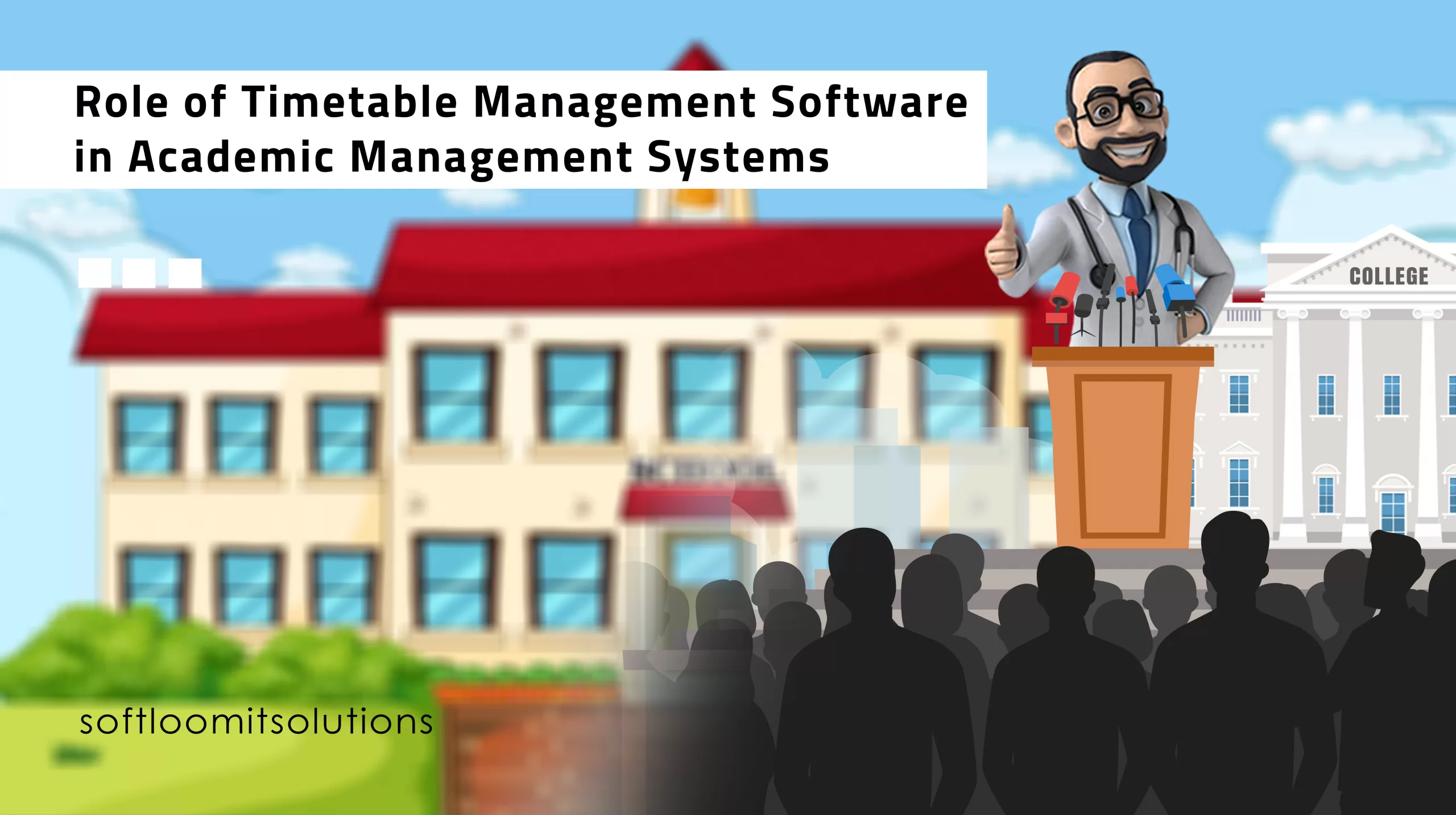In timetable management system for academic institutions, academic management is crucial in ensuring the smooth operation of all activities. From curriculum planning to resource allocation. With technological advancements, many traditional aspects of educational management have undergone a digital transformation. A pivotal part of this shift is the introduction of Timetable Management Software (TMS).
We know that in this technological era, TMS has emerged as an essential tool for academic institutions. Offering a comprehensive solution to the challenges associated with scheduling and managing various educational activities. But what exactly is a Timetable Management Software, and how does it contribute to the broader landscape of Academic Management Software (AMS)?

What is Timetable Management Software?
Timetable Management Software is a digital solution that automates creating and managing academic schedules in educational institutions. It replaces the traditional manual timetabling system with an intelligent, automated approach, saving time, reducing errors, and improving efficiency.
The software allows administrators to input various parameters like faculty availability, subject preferences, and classroom capacities, and then, using advanced algorithms, it generates an optimal timetable that minimizes clashes and maximizes resource utilization. Furthermore, it provides an easy interface for updating or changing timetables, making it a flexible and dynamic tool for academic scheduling.
Features of a Timetable Management Software
- User-friendly Interface: A good TMS should have a simple, intuitive interface that administrators, faculty, and students can easily navigate.
- Flexible Scheduling: It should be capable of creating varied schedules, accommodating different academic periods (lectures, labs, seminars), and considering the complexities of faculty and room availability.
- Scheduling classes in college management system: It helps prevent scheduling conflicts and ensures that all required courses and subjects are adequately covered within the available time slots.
- Conflict Resolution: The software should be adept at avoiding scheduling conflicts and providing solutions when such conflicts occur.
- Real-time Updates: Timetables should be updated to reflect changes, ensuring everyone is informed about the latest schedule.
- Reports and Analytics: The software should provide reports and analytics on resource utilization, timetable performance, and other relevant metrics.
Role of Timetable Management system
The integration of Timetable Management Software into the larger Academic Management Software plays a critical role in enhancing the overall efficiency of educational institutions.
- Efficiency: Automating the timetabling process significantly reduces the time and effort of scheduling. This efficiency frees up time for administrators to focus on other essential tasks, thereby increasing institutional productivity.
- Resource Optimization: By considering various parameters during scheduling, TMS ensures optimal use of resources such as classrooms, labs, and faculty time. This leads to better resource management and cost savings.
- Transparency and Accessibility: With digital timetables, all stakeholders, including administrators, teachers, students, and parents, can access the schedule from anywhere at any time. This transparency fosters better communication and coordination.
- Error Reduction: TMS minimizes human errors that can occur during manual scheduling. The software’s ability to spot and rectify clashes and overlaps results in more accurate and reliable timetables.
- Seamless Integration: TMS can be seamlessly integrated with other elements of Academic Management Software, such as attendance systems, grading systems, and learning management systems. This integration creates a unified platform for managing all academic activities, enhancing functionality and user experience.
- Improved Student and Teacher Satisfaction: With a well-managed timetable, students can better plan their studies and co-curricular activities, while teachers can organize their teaching assignments more efficiently. This leads to improved satisfaction and academic performance.
- Data-Driven Decisions: The reports and analytics provided by TMS can be used to make data-driven decisions. For instance, institutions can identify underutilized resources or peak usage times and take necessary actions to improve efficiency.
- Environmentally Friendly: Digital timetables eliminate the need for paper-based schedules, contributing to a greener, more sustainable academic environment.
Timetable Management Software is an invaluable tool within the broader framework of Academic Management Software. Automating the complex task of academic scheduling brings about significant improvements in efficiency, transparency, and resource optimization. As educational institutions continue to embrace digital transformation, the role of TMS in academic management will only grow in importance. It’s not just about managing timetables; it’s about managing the future of education.






